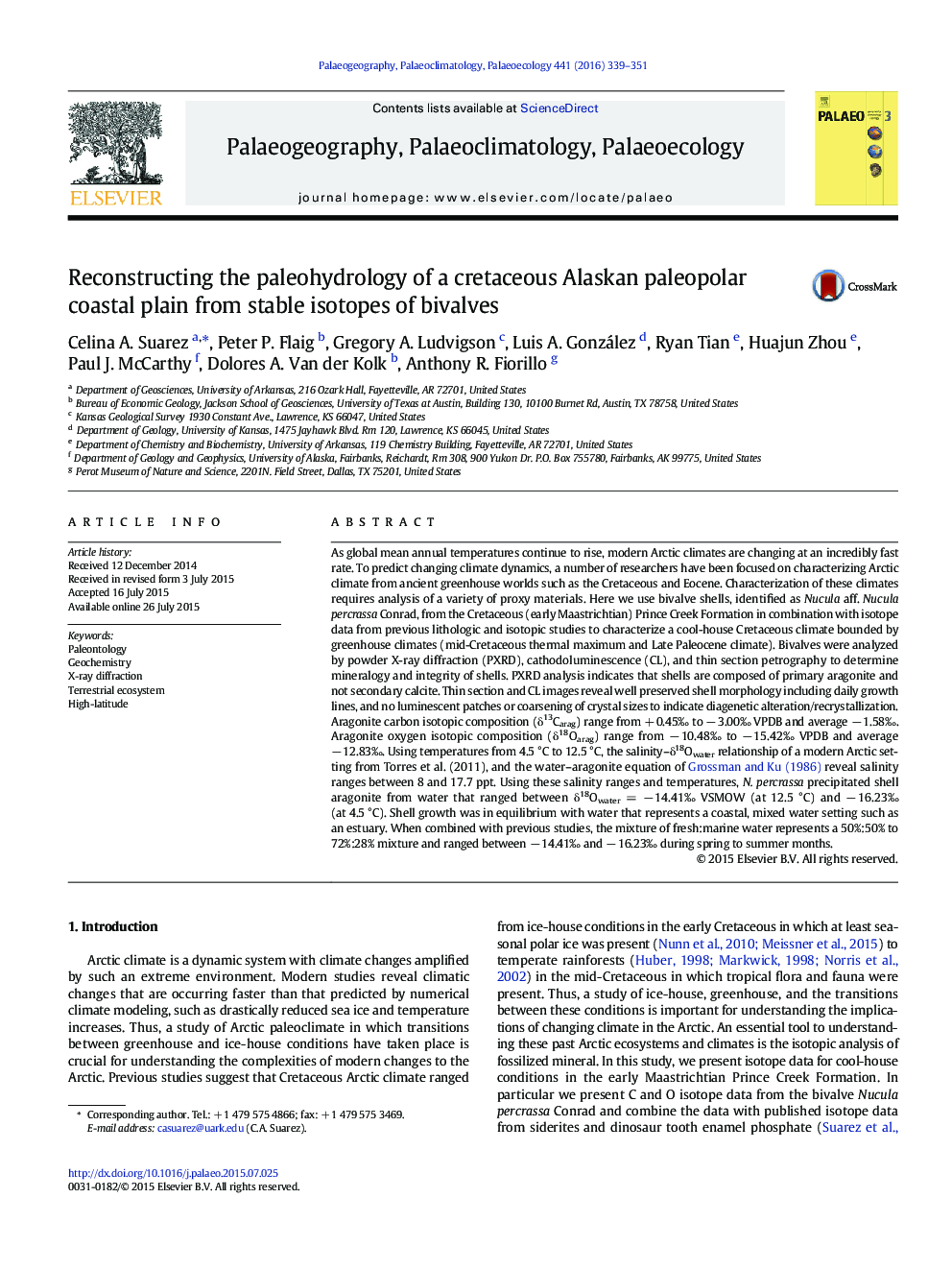| کد مقاله | کد نشریه | سال انتشار | مقاله انگلیسی | نسخه تمام متن |
|---|---|---|---|---|
| 4465826 | 1313950 | 2016 | 13 صفحه PDF | دانلود رایگان |
• Nucula percrassa from the Cretaceous Prince Creek Fm. was analyzed for C, O-isotopes.
• Data from the Alaskan bivalve suggests salinity of water was between 8 and 17.7 ppt.
• Isotopic composition of water ranged between − 14.41 and − 16.23‰ V-SMOW.
• Based on new and published data, fresh:marine water ranged from ~ 50:50 to 72:28%.
• High latitude ancient Arctic greenhouse climate was highly variable.
As global mean annual temperatures continue to rise, modern Arctic climates are changing at an incredibly fast rate. To predict changing climate dynamics, a number of researchers have been focused on characterizing Arctic climate from ancient greenhouse worlds such as the Cretaceous and Eocene. Characterization of these climates requires analysis of a variety of proxy materials. Here we use bivalve shells, identified as Nucula aff. Nucula percrassa Conrad, from the Cretaceous (early Maastrichtian) Prince Creek Formation in combination with isotope data from previous lithologic and isotopic studies to characterize a cool-house Cretaceous climate bounded by greenhouse climates (mid-Cretaceous thermal maximum and Late Paleocene climate). Bivalves were analyzed by powder X-ray diffraction (PXRD), cathodoluminescence (CL), and thin section petrography to determine mineralogy and integrity of shells. PXRD analysis indicates that shells are composed of primary aragonite and not secondary calcite. Thin section and CL images reveal well preserved shell morphology including daily growth lines, and no luminescent patches or coarsening of crystal sizes to indicate diagenetic alteration/recrystallization. Aragonite carbon isotopic composition (δ13Carag) range from + 0.45‰ to − 3.00‰ VPDB and average − 1.58‰. Aragonite oxygen isotopic composition (δ18Oarag) range from − 10.48‰ to − 15.42‰ VPDB and average − 12.83‰. Using temperatures from 4.5 °C to 12.5 °C, the salinity–δ18Owater relationship of a modern Arctic setting from Torres et al. (2011), and the water–aragonite equation of Grossman and Ku (1986) reveal salinity ranges between 8 and 17.7 ppt. Using these salinity ranges and temperatures, N. percrassa precipitated shell aragonite from water that ranged between δ18Owater = − 14.41‰ VSMOW (at 12.5 °C) and − 16.23‰ (at 4.5 °C). Shell growth was in equilibrium with water that represents a coastal, mixed water setting such as an estuary. When combined with previous studies, the mixture of fresh:marine water represents a 50%:50% to 72%:28% mixture and ranged between − 14.41‰ and − 16.23‰ during spring to summer months.
Journal: Palaeogeography, Palaeoclimatology, Palaeoecology - Volume 441, Part 2, 1 January 2016, Pages 339–351
